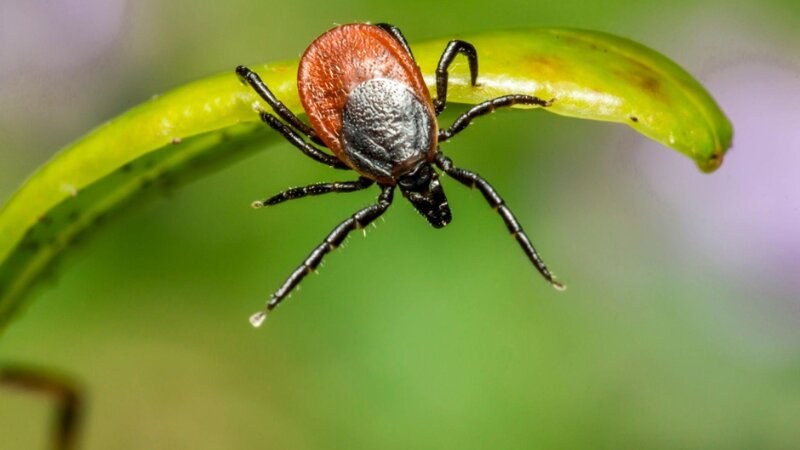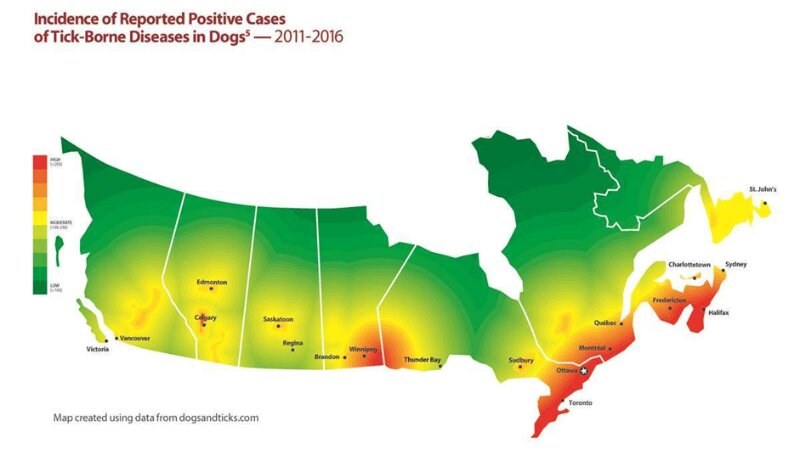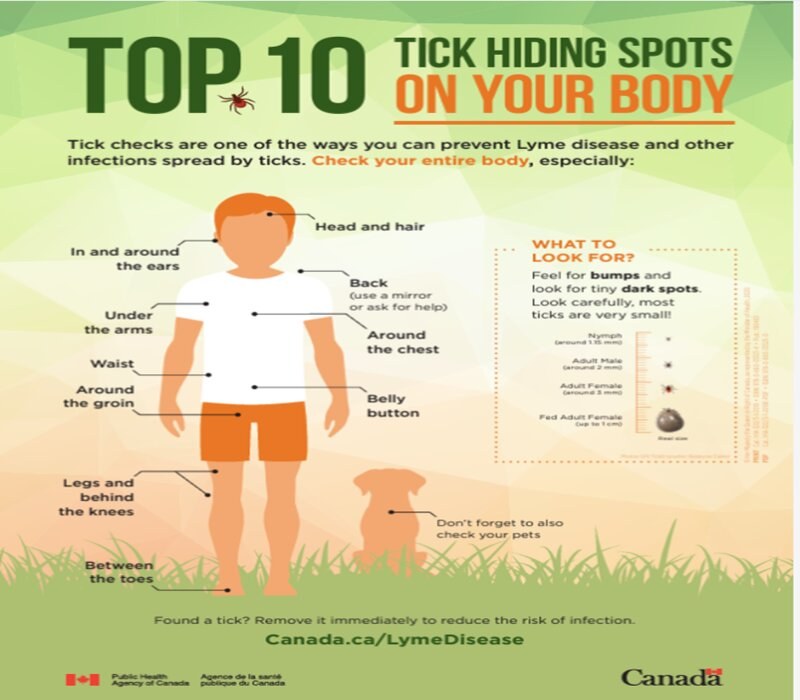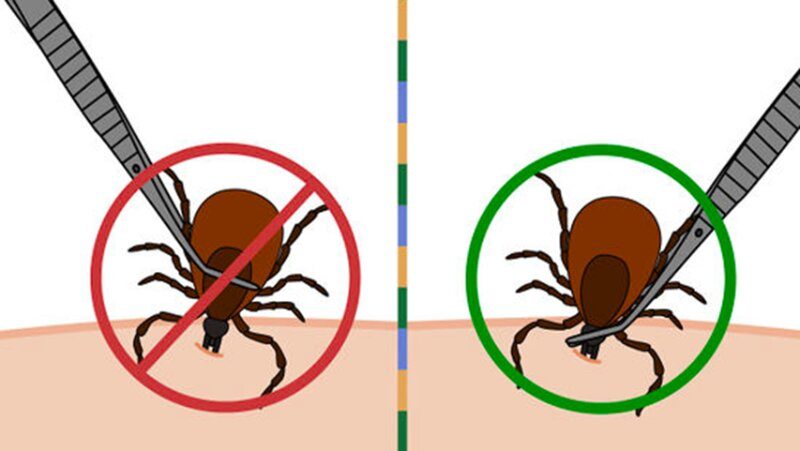Lyme Disease - What You Need to Know
Reading time: 6 minutesLyme disease, also known as Lyme borreliosis, is an infectious disease caused by a bacterium named Borrelia burgdorferi. It’s transmitted to humans by the bites of infected blacklegged ticks attached to the human body for over 24 hours. Due to climate change, these ticks are spreading to new areas in Canada.
Because ticks are really small—with the nymph being the size of a poppy seed, whereas the female adult ticks being the size of a sesame seed—and their bites are pretty much painless, most people don’t realize they’ve been bitten. Black legged ticks get the bacteria from infected animals such as birds and rodents.

Lyme Disease in Canada
Over the past two decades, the reported cases have steadily increased. Government of Canada figures state that between 2009 and 2022, human cases of Lyme disease accumulated to 17,080 cases across Canada.
With growing tick populations and the spread of ticks to newer areas through birds and deer, unfortunately, these numbers continue to increase as more and more people are exposed to the risk of getting infected.
Symptoms of Lyme Disease

How do you know if someone has been infected with Lyme disease?
Symptoms can be different for different people and typically start showing up in between the 3–30 day margin. Keeping an eye out for these symptoms is crucial as early detection cases stand a fair chance to be treated quickly through antibiotics.
Common symptoms include:
- Fatigue
- Fever
- Chills
- Rashes
- Aching muscles and joints
- Swollen lymph nodes
If the above symptoms are ignored and left untreated, they can pave the way for more extreme symptoms. These include:
- Irregular heartbeat
- Joint pain
- Severe headaches
- Nervous system disorders
- Bell’s palsy / facial paralysis
In case you notice any exposure or symptoms of Lyme Disease in yourself, your loved ones, or people in your surroundings, contact your nearest healthcare provider at the earliest.
Unfortunately, 10 to 20% of people still experience joint pains, memory problems, and tiredness for long periods even after being treated.
Lyme Disease in Pets
Lyme disease can also affect your dogs, cats, cattle, and horses. Here’s a graph that shows incidents that were reported in the past.

If you’re concerned about the spread of Lyme disease from your pets, you can sigh in relief. Pets cannot directly spread the disease to humans. However, your pets—dogs, cats, cattle, and horses—may be potential carriers of infected ticks, so tick control measures are imperative.
To ensure your pets' safety and health, regularly check them for ticks and maintain good pet hygiene and grooming. Long, untamed hair makes it harder to detect a tick problem sooner.
Tips for Safety & Lyme Disease Prevention
Ticks are most active during the spring, summer, and fall. However, that doesn’t mean you won’t see them at other times of the year. In fact, they may be active at any time of the year as temperatures rise above freezing.
The best way to avoid getting Lyme Disease is by preventing a tick bite in the first place, and here’s how you can do that:
- Wear shoes with closed toes
- Walk on walkways/pathways that are clear
- Wear long-sleeved, light-coloured shirts and pants
- Keep your shirt tucked in your pants
- Pull your socks over the pant legs
- Wear permethrin-treated clothing
- Always shower after being outdoors
- Dry your clothes on high heat for 10 minutes
- Check your entire body when you return from being out in tall grassy areas. These critters are pretty sneaky and have some great hiding spots on your body.

Practising these simple yet effective tips regularly, especially outdoors, can help prevent bringing in any ticks home and help you continue enjoying your outdoor activities.
How to Control Ticks in Your Yard
To control the tick population in your backyard and make it a safe place for your outdoor activities, try these:
- Cleanliness - Regularly move your lawn and cut tall grass. If there is any leaf litter, remove it immediately or keep it covered.
- Wood Chips Barrier - Make a 3 ft. wide barrier between the lawn and the house to prevent tick migration to other areas of the house.
- Clutter-free - If your backyard home has old furniture, trash, and other clutter, remove it to prevent creating an environment for new ticks.
- Animal Fencing - To prevent surprise visitors, consider adding a fence to keep wildlife like deer from venturing into your yard and bringing in ticks.
- Preventive Tick Control Measures – Sometimes, no matter how hard you keep your space clean and clutter-free, you still might be dealing with a tick infestation if you’re living in an area with thick vegetation nearby. The answer here is professional preventive pest control measures like a defensive barrier that keeps ticks out.
What Happens If You’re Bit By a Tick?
While taking precautions helps reduce the risk, there’s always a chance that you may still end up getting bitten. In that case, here’s what you can do:

- Immediately Remove The Tick - This needs to be done with care. Using a fine-point tweezer, grab the tick’s head as close to the skin as possible and slowly pull it out straight. If part of the tick mouth remains intact on your skin, try removing it again, and if it doesn’t work, let it heal naturally.
- Clean -Wash and clean the bite area using soap and water or an alcohol-based sanitizer.
- Secure the tick - If the tick was caught and removed easily, place it in a closed container and share it with your concerned healthcare authorities.
- Post care - If you feel unwell after a tick bite, head to your nearest healthcare clinic for medical attention.
Frequently Asked Questions (FAQs) About Lyme Disease
What are the common symptoms of Lyme disease?
Common symptoms include fever, fatigue, headache, muscle and joint aches, and a characteristic bull's-eye rash called erythema migrans (EM). However, symptoms can vary and may not always include a rash.
How is Lyme disease transmitted?
It’s primarily transmitted to humans through the bite of infected blacklegged ticks. Commonly found in wooded and grassy areas, particularly in regions with high deer populations.
What regions of Canada are most affected by Lyme disease?
Lyme disease cases have been reported in several regions across Canada, including parts of Ontario, Alberta, Quebec, Saskatchewan, Nova Scotia, New Brunswick, Manitoba, and British Columbia. However, it's important to note that both blacklegged ticks and the risk of Lyme disease may be spreading to new areas, and stronger measures for tick pest control are needed. The good news is that we provide comprehensive tick control services in Calgary, Edmonton, Red Deer, Regina, Saskatoon, Winnipeg, and Okanagan.
How can I prevent Lyme disease when spending time outdoors?
Prevention measures include wearing long sleeves and pants, using insect repellent containing DEET or Icaridin, and conducting thorough tick checks on yourself, your family, and pets after outdoor activities. Promptly removing the attached tick(s), if detected, can help prevent Lyme disease transmission.
More Resources on Lyme Disease
- Lyme Disease Prevention (Government of Canada)
- Lyme Disease Prevention Brochure (Government of Canada)

Taking Control of Your Backyard with Effective Tick Pest Control
We at Buzz Boss believe raising awareness and taking practical measures to protect ourselves is essential. Our BuzzShield Insect and BuzzShield® Complete treatments were designed to help control ticks and other pesky insects in your yard.
During our inspection, we also always provide a BuzzCheck for our customers to help them reduce areas that may be inviting to ticks, such as tall grass, overgrown shrubs, and leaf litter.
Let our experts inspect, identify, and eliminate areas that may be inviting ticks, and help your family enjoy extra safety against Lyme disease. Book your appointment now.

